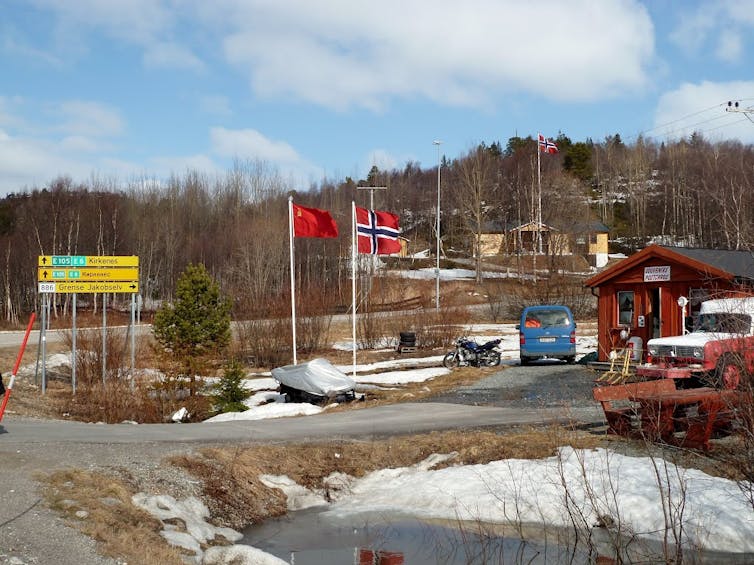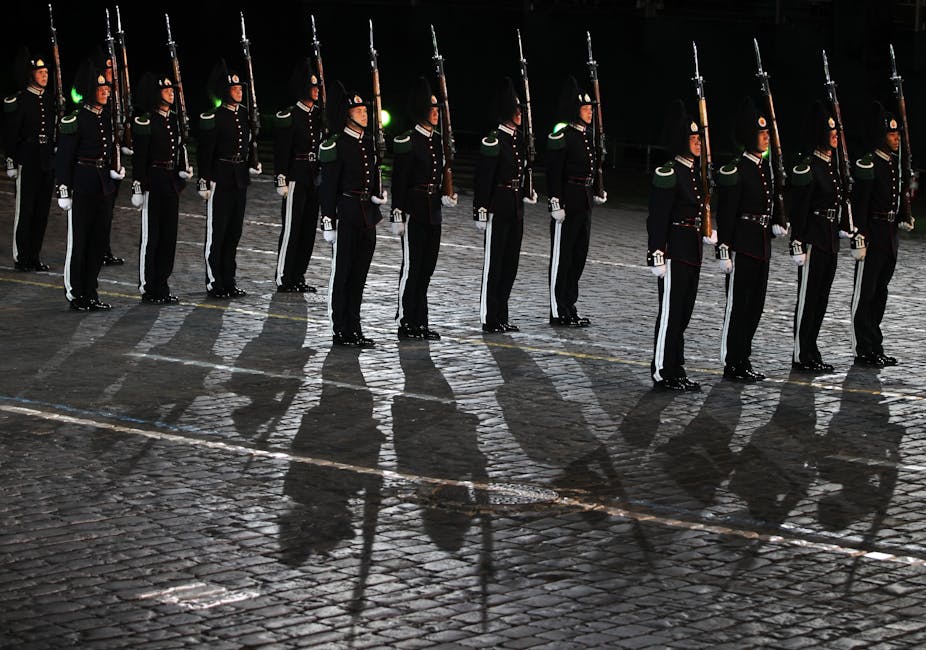Anxiety over the crisis in eastern Ukraine has ratcheted in recent days amid claims of an effective Russian invasion, and warnings of NATO making a 4000-troop reaction force available to the region. As events continue to unfold, we ask what this means for the future of Russia and relations with its neighbours. Is Vladimir Putin merely defending his country’s interests or are we witnessing the gathering momentum of a new Russian imperialism?
This is the third in a series that aims to explain the risks and flashpoints across Russian’s European frontier. Here we highlight Finland and Norway.
Rinna Kullaa, University of Jyväskylä
According to Russian current popular memory, Russian-Finnish relations have been characterised by respect since Finland gained independence from its eastern neighbour in 1917. Russians who live in the western and northern regions generally favour the clean environment and well-organised society of their neighbour, seeing the country as a good living space. This sense of continuous (even if imagined) admiration colours relations between the two countries.
Since the end of the Soviet Union, relations have been stable. This has been driven not only by mutual diplomacy, but also from Russia´s middle class visiting Finland as tourists – even though recent years of Russian stagnation have undermined this to some extent. Finnish public television broadcasts news in Russian language daily. There are more than 66,000 native Russian speakers living in Finland among a population of 5.5m.

Finland and Russia share an 833-mile border. Finland became an autonomous Russian grand duchy in 1809 and an independent state in 1917. After World War II, Finnish presidents JK Paasikivi and Urho Kekkonen developed a foreign policy of neutrality as a means of maintaining independence and gaining room for manoeuvre in international relations during the Cold War era.
This meant limiting relations with Euro-Atlantic institutions to economic agreements, refraining from security alliances and allowing a domestic communist party to be active. The policy survived until the end of the Soviet control over eastern Europe in 1989. Finland has been a member of the Nordic Council since 1955, a member of the UN since 1955 and of the EU since 1995. It is not a member of NATO, but did join the organisation’s partnership for peace initiative in 1994 and has been active within its operations.
Finland has been one of the middle group of countries within the EU wanting to engage Russia to end its pressure on Ukraine. It has neither taken part in inflammatory rhetoric against the Kremlin, nor shown disinterest in Ukraine´s future. Finland has been willing to contribute to EU common positions on sanctions, despite fears that this may hamper trade with Russia. The second round of EU sanctions put in place in September were hotly debated in Finland. In the end, the decision makers were determined to support tough sanctions if necessary, but their first priority was to do no harm and further the process of de-escalation.
Finnish-Russian diplomatic relations are such that when Russia needs to discuss global affairs from a Western point of view, it can talk to Finland. This access was built through active diplomacy over time, most recently by long-serving Finnish president Tarja Halonen (2000-2012) and foreign minister Erkki Tuomioja (2000-2007, 2011-current).
Paul Buvarp, University of St Andrews
Norway and Russia share a border, interests and challenges as arctic states. But Norway is also a NATO member —- a founding member, no less -— and will from October 1 have its representative as secretary-general. The best course of action in this complicated relationship has been a relatively strict compartmentalisation of these two positions.
The border between the countries is not very long, stretching barely 120 miles over the sparse tundra in the far north. Nevertheless it is closely watched. One of Norway’s ten military garrisons, Høybuktmoen, has as its principal mission the surveillance and control of the border. Norwegian military intelligence also places a high priority on watching Russia. The only two languages taught in intelligence training are Arabic and Russian.
Despite the monitoring, longstanding tradition and a series of diplomatic achievements have ensured an amicable coexistence, with crises -— when they inevitably occur -— handled tactfully and with great care. Predictable future issues, like resource exploitation around the maritime border, have so far largely been pre-emptively resolved through even-handed and undramatic diplomacy.

But beyond this regional, neighbourly co-operation, Norway aligns itself virtually without fail with the prevailing winds from its NATO and western allies. Norway’s ministry of foreign affairs, for example, joined NATO in condemning the Russian annexation of Crimea.
These differences between neighbourly and global policies toward Russia is bound to become problematic. Added to this, tensions are apt to rise in connection with resource extraction under the arctic ice-cap, where interests surely collide. So far, the regional cooperation is seen as mutually beneficial, but global questions increasingly cramp the tightrope walk.
To read other instalments from our Russia’s borders series, click here.

